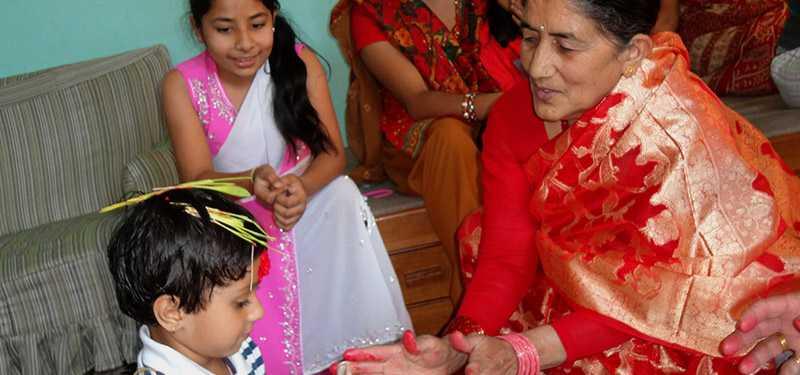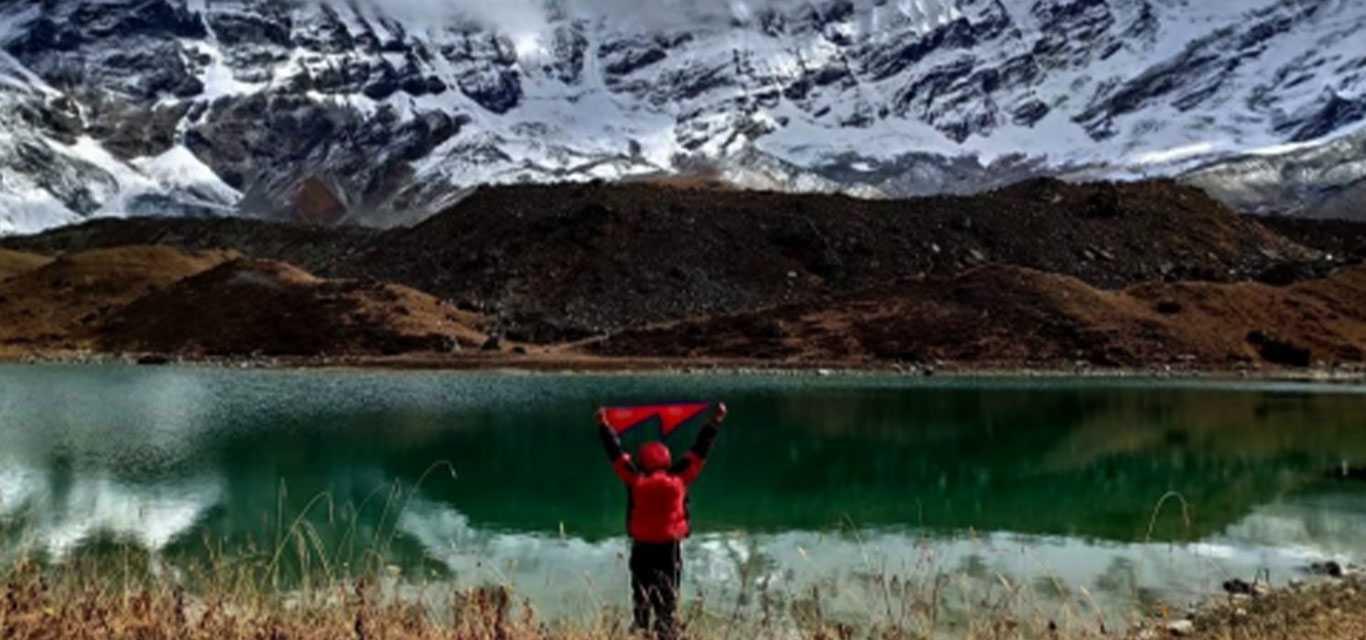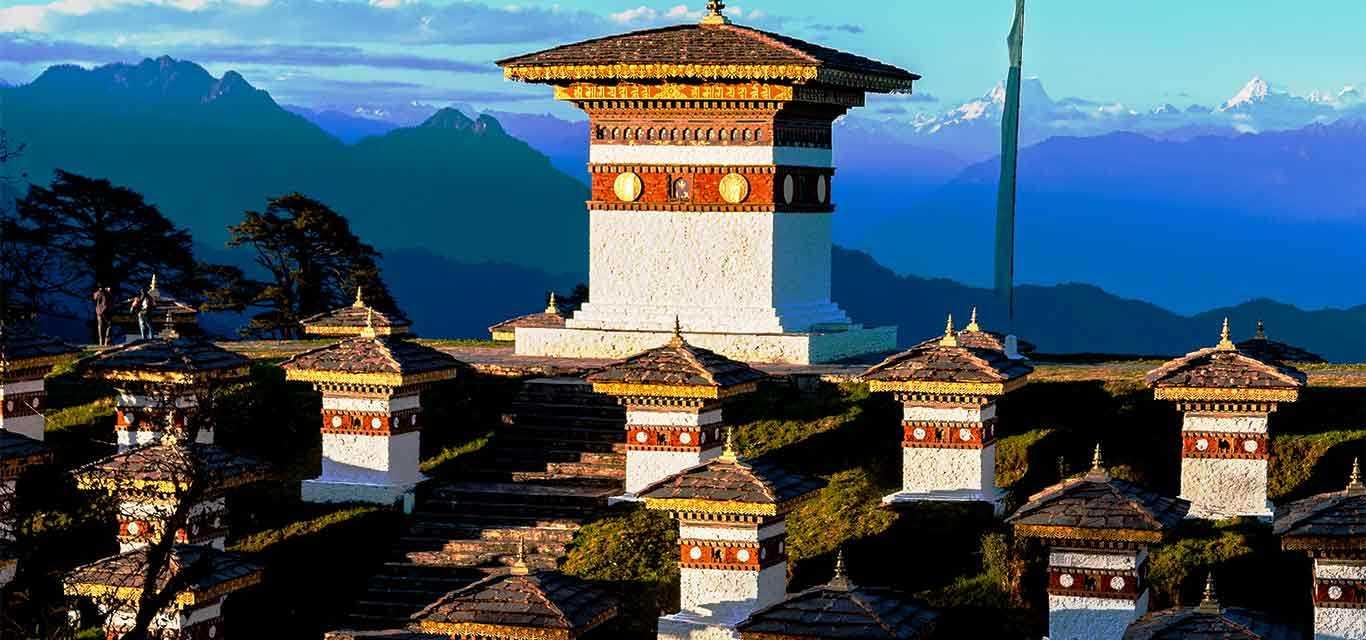Top 10 Climbing Peaks in Nepal

Climbers are Near to Top of Island Peak
Nepal is an alpine paradise, home to thousands of pristine peaks, including eight out of the 10 highest mountains in the world. Nepal is also well-known as one of the best destinations for mountaineering, so it is a perfect gateway for you, far away from the turmoil of daily lifestyle.
The crowning glory of peak climbing in Nepal is undoubtedly the majestic view of the peaks piercing the clouds seen from the summit. You will definitely feel like living in a utopia after climbing the peaks. This adventurous journey will take you through the wilderness of rugged alpine valleys, witnessing the miracles of nature, leading towards the ultimate trip of your life, full of great experiences and unforgettable memories.
Nepal has climbing peaks to offer for both pro and novice climbers. Below are the Top 10 climbing peaks blessed with a heavenly view and thrilling adventure, complementing all the climbers.
1. Island Peak Climb
Island Peak is also known as Imja Tse, is a magnificent peak standing at an altitude of 6,189 meters above sea level. This peak was named so because of its resemblance to a floating island in a sea of ice. Island Peak is one of the most popular climbing peaks, usually combined with the Everest Base Camp Trek for acclimatization purposes.
 Compared to other technical climbing peaks, Island Peak is considered to be on a moderate level. Travelers must be physically fit, engaged in some outdoor activities, and shouldn’t have altitude problems.
Compared to other technical climbing peaks, Island Peak is considered to be on a moderate level. Travelers must be physically fit, engaged in some outdoor activities, and shouldn’t have altitude problems.
Located in a picturesque Solukhumbu Valley, this place is not only blessed by mesmerizing natural beauty but also by the rich culture of the brave Sherpa people. It takes a day from Island Peak Base Camp/Chhukung to Island Peak Base Camp for the summit.
2. Mera Peak Climb
Mera Peak is a sublime peak rising to the south of Everest, located in the Makalu region. It is the highest climbing peak, standing at an altitude of 6,476m. Mera Peak is more on the easier yet adventurous side of climbing that offers a rugged trail passing through lush alpine Rhododendron forests, glaciers, serene valleys, frozen lakes, and stunning scenery. The backdrop of the Himalayas includes Everest, Lhotse, Nuptse, Makalu, Cho Oyu, Ama Dablam, and others.

Climbers will also get an opportunity to visit the wooded valleys of Hinku and Hongun Drangkas and experience the authentic culture, cuisine, and hospitality of the Sherpa ethnicity.
This venturesome climb is perfect for adventure enthusiasts who wish to experience unique off-the-beaten-path destinations. The overall climb is of 1 day from Khare/Merala, the summit, and back.
3. Yala Peak Climb
Located north of Kathmandu in the Langtang region of Nepal, Yala Peak is the nearest and easiest climbing peak. This peak is the finest choice for the first-time climber and especially perfect for the trekkers who have a limited timeframe, as the duration of the climb is a day.
Yala Peak stands at an altitude of 5,732m, offering a sublime view of Shisapangma (the tallest mountain in Tibet), Langtang Lirung, Dorche Pakpa, Gangchepo, Langshisa Ri, and others. This region lies very close to the border of Tibet, so the travelers will get to experience the Tibetan-influenced culture of the Tamang inhabitants.

Apart from the mesmerizing view of the Himalayas, this trek is popular for covering outstanding places like Kyanjin Gompa, the Yak cheese factory, and Gosaikunda Lake. It also lies in Langtang National Park, hence it is very rich in exotic flora and fauna. If lucky enough, the trekkers could also encounter endangered species of animals like the snow leopard, Ghoral, Himalayan tahr, musk deer, grey langur monkey, and several others.
4. Lobuche East Peak Climb
Lobuche East Peak is a thrilling experience of climbing in the Khumbu region, ideal for adventure enthusiasts. This trek is often combined with Everest Base Camp or Island Peak. As the climb is more on the technical side, people having climbing experience are suggested.

Climbing to Lobuche East Peak is truly worth it because of the glorious view of the exalted Himalayas, including Everest, Lhotse, Pumori, Ama Dablam, etc., and the picturesque Khumbu Valley.
Lobuche East Peak has an altitude of 6,119m above sea level. Walking through the trail, the trekkers will experience the glaciers, ice lakes, monasteries, typical Sherpa villages, and will pass through Kala Patthar and Everest Base Camp. The total duration for the Lobuche East Climb is a day.
5. Dhampus Peak Climb
Dhampus Peak, also known as ‘Thapa Peak,’ lies northeast of the Dhaulagiri Massif, standing at an elevation of 6,012 meters. This trek is generally combined with the Dhaulagiri Circuit. Since it is a non-technical peak, semi-mountaineering experiences are required for the climb, but the climbers must have good health.
Climbing Dhampus Peak is full of surprises. You will walk through the alpine terrains and cultivated lands, picturesque villages, sparkling water bodies, and trails crossing French Pass (5,360m) and Dhampus Pass (5,240m).
Dhampus Peak summit offers an aesthetic panoramic view of 30 different peaks, including Dhaulagiri, Annapurna, Tukuche, Manaslu, Nilgiri, Tilicho, and many others.
6. Bokta Peak Climb
Bokta Peak is the perfect off-the-beaten climb for adrenaline junkies. This peak lies in a rugged, isolated region of Kanchenjunga South Base Camp. Also known as Boktoh, it is a less-touristic semi-technical peak but consists of one of the best climbing trails Nepal has to offer.
Bokta Peak is listed as an “A” category climbing peak by the Nepal Mountaineering Association (NMA). And it was opened to visitors in 1988 AD. It is mostly climbed as an acclimatization peak before climbing Kanchenjunga.
The view seen from the summit of 6,143 meters includes the world’s third-highest mountain, Mt. Kanchenjunga, Jannu Himal, Mt. Kumbakarna, Dhormo Peak, Mt. Nupchu, etc, beautiful, lush forests, picture-perfect villages, and majestic landscapes.
This region is highly influenced by Tibetan culture; hence, you will get to experience their authentic cuisine and hospitality.
7. Pisang Peak Climb
Pisang Peak, standing at an elevation of 6,092 meters, is one of the most popular climbing peaks in the Annapurna region. It is located north of Manang and lies in the Annapurna Conservation Area.

This peak is considered to be technical. Hence, previous mountaineering experience, physical fitness, and good health are required for the climb. It is generally combined with the Annapurna Circuit Trek.
Also known as Jong Ri, it is a beautifully symmetrical peak with a slightly pointy apex. The journey takes you through cultivated terrains, mesmerizing landscapes, serene villages, glaciers, waterfalls, and lakes. The panoramic view of the entire Annapurna Massif seen from the Pisang Peak summit makes the trip worth it.
8. Chulu West Peak Climb
Chulu West is one of the best climbing peaks for climbers who love the feeling of an adrenaline rush. This adventurous climbing peak is located in the western part of Nepal in the Annapurna region. The trail of Chulu West includes the beautiful Manang villages and the Thorong La pass.
Standing at an elevation of 6,419 meters above sea level, this peak’s summit provides a sublime view of the Himalayan ranges, including Annapurna, Dhaulagiri, Nilgiri, and many others.

Chulu West is also combined with the Annapurna Circuit Trek. It is not a technically difficult climb, but previous semi-mountaineering experience and physical fitness are required. Apart from the natural beauty, this reason has a rich culture of mixed ethnic inhabitants of Nepal.
9. Tent Peak Climb
Tent Peak is also known as Tharpu Chuli, is an adventurous peak that offers a thrilling experience to the climbers. This peak is the most climbed in the Annapurna region and the third most climbed peak in Nepal. Tent Peak is quite technical, so trekkers without mountaineering experience are not recommended for the climb.
This peak is perfect to step up your climbing experience. It stands at an altitude of 5,663 m above sea level. This climb is truly rewarding because of the astounding panoramic view of the Annapurna Massif seen from the summit.

Tent Peak consists of one of the most beautiful vistas in the Annapurna Sanctuary. The trail towards this snow-dusted peak is as beautiful as the peak itself. Walking through lush Rhododendron forests, terraced fields, sparkling rivers, and waterfalls, and experiencing the warm hospitality, culture, and cuisine of the locals makes the trip more spectacular.
10. Pharchamo Peak
Pharchamo Peak is a snowy paradise that lies south of the Tashi Lapcha pass, located between Rolwaling and the Khumbu valley. It stands at an elevation of 6,273 meters above sea level. This peak is considered technical. As such, climbers having previous mountaineering experience, proper skills, fitness, and good health are suggested. It is usually combined with the Rolwaling Valley trek.
This snow-capped peak is of pyramid shape and has a north-by-northwest ridge that rises from the horizontal, crevassed glacier atop the Tashi Lapcha. Pharchamo Peak is highly suggested for venturesome climbers as it provides you with the taste of thrilling snowy adventure.
This climb is considered challenging because of the crevassed glacier and windy routes. But the feeling of the holy grail attained after encountering the ultimate panorama of Mt. Gauri Shankar, Mt. Melungtse, Mt. Everest, Mt. Makalu, Mt. Cho Oyu, Mt. Ama Dablam, Mt. Thamserku, and several other Himalayas makes the trip worth it.
Best Time for Peak Climbing in Nepal
The best time for climbing peaks in Nepal is spring (mid-March to May) and Autumn (mid-September to the beginning of December). These seasons are best for climbing and trekking also because of the warm weather, less rainfall, and lower snow levels. The view along the trail is crystal-clear and mesmerizing during this time of the year, complemented by the blue sky.
Gear List
Packing is one of the confusing and time-consuming things while planning a trip. You require certain items for peak climbing in Nepal. We always advise our clients not to pack too much or too little. Experienced mountaineers know certain essential gear and clothes.
The climbers must pack warm clothes, as you may know, the Himalayan climate is relatively cold. The number of clothes to pack depends on the duration of the trip.
Equipment like ice axes, crampons, harnesses, rope, snow bars, and many others is vital for your climbing quest. Please go through the article to know more about packing for climbing in Nepal.
Accommodation and Meals
There are teahouses, guesthouses, and lodges available while trekking until Base Camp, but it depends on the peak that you are climbing. Some trekking routes have comfortable accommodation with facilities, whereas some have very basic accommodations. However, we try our best to provide our clients with the best possible facilities.
The trekkers will start the camping journey either from the base camp or the high camp, which also varies according to different peaks. The Himalayan Trekkers team will prepare tented accommodation for the climbers.
The local teahouse, guesthouse, or lodges provided locally prepared meals of different cuisines like Nepali, Indian, Continental, and Western as per availability. All the meals throughout the trip are fresh and hygienic. While in base camp, high camp, or during climbing, our crewmates from the climbing team will prepare meals for the group.
Permits
27 different climbing peaks falling under Grade A and Grade B are promoted by NMA (Nepal Mountaineering Association). The permits for these peaks are provided by NMA itself. Only authorized trekking agencies must are members of NMA are allowed to issue permits.
Your trekking agency will provide you with the permits after the fulfillment of all the documentation and royalties, which will take a day. But if the travelers have a limited timeframe, we could also issue the permits before their arrival. Himalayan Trekkers will provide all the information about trekking, climbing, checklists, required permits, and documentation during the corresponding time.
The travelers will have to provide us with all required documentation beforehand so that we can prepare the permits in advance.
Apart from these 27 peaks, other peaks are promoted by the Tourism Department of the Government of Nepal. Hence, they will issue the permits for climbing. The permit fees differ according to the peaks, but the procedure will remain the same. It might take more than a day to issue permits through the Government, depending on the situation.
Drinking-Water
Three types of water, Himalayan spring water, Bottled Mineral water, and boiled and filtered spring water, are available till the Base Camp. However, the trekkers will have to buy the bottled mineral water and boiled and filtered spring water. The Himalayan spring water flowing through the streams and taps is, of course, free. Some travelers also prefer to purify the natural Himalayan spring water using chlorine or other methods.
We recommend trekkers to either bring their own water filter, handpumps with a carbon filter, chlorine drops, UV water purifier, or buy the boiled and filtered water from the locals, as it helps in sustainability and local income generation.
During base camp, high camp, and the climbing period, the team will provide you with boiled and filtered spring water or boiled and purified ice as per availability.
Travel Insurance
Getting travel insurance before starting your trip is highly recommended, especially for climbing. It is because the mountain weather is unpredictable, and your safety is always the first priority. We advise our clients to get travel insurance that also includes Medical evacuation.
Sometimes, unfortunately, bad weather, difficulties in climbing, natural disasters like avalanches and earthquakes, altitude sickness, or any other health hazards, and robbery may occur during the trip. This is why travel insurance is a must. It not only ensures protection but also saves the hefty amount of money that can instead be utilized for traveling.
Altitude Sickness and Acclimatization
While trekking or climbing the Himalayas, one should have a planned altitude acclimatization schedule and must stick to it because it is a vital way to stop altitude sickness. While trekking, the altitude should be increased gradually.
The symptoms of altitude sickness vary from person to person, and they may include headache, nausea, dizziness, fatigue, etc.
To dodge altitude sickness, the climbers must drink lots of liquid, avoid smoking, drinking alcohol, and taking sedatives, and it is also proven that consuming garlic helps with altitude sickness.
Climbing Guide
Being a professional climbing guide is no joke. A climbing guide must have experience in the Himalayas. Being a climbing guide is a very technical profession; hence, he must attend certain training about climbing peaks, gear usage, navigation, first aid, and camping.
Only the perfectly skilled, experienced, confident, and destination expert guide will attain the license from an authorized institution of the Nepal Government.
All the guides of Himalayan Trekkers are professionals with licenses, having decades of experience, destination expertise, and are very easygoing and friendly.
Note: There are certain unauthorized agencies or guides that are organizing climbing illegally, but they can be cheaper, which may attract some travelers. We highly discourage you to not to traveling with them because of a lack of safety and security. Climbing peaks in Nepal comes with risks, especially when the guides are not professional, and this is also considered a felony.



